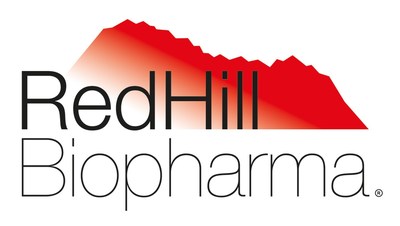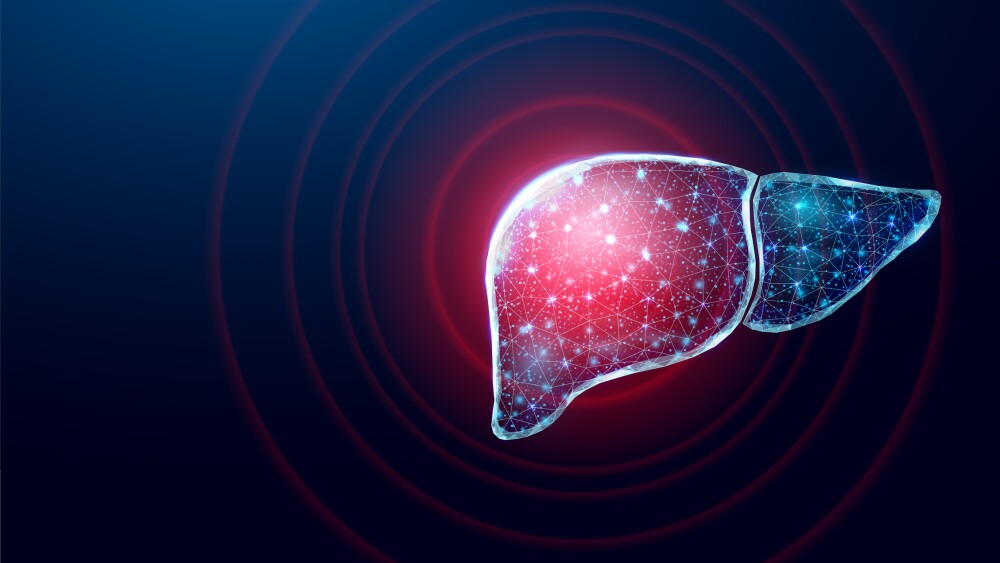Two new analyses evaluate pharmacological and clinical advantages of Talicia® as first-line H. pylori therapy over clarithromycin-based regimens
Two new analyses evaluate pharmacological and clinical advantages of Talicia® as first-line H. pylori therapy over clarithromycin-based regimens
|
| [25-October-2021] |
| TEL AVIV, Israel and RALEIGH, N.C., Oct. 25, 2021 /PRNewswire/ -- RedHill Biopharma (Nasdaq: RDHL) (“RedHill” or the “Company”), a specialty biopharmaceutical company, today announced the presentation of four new analyses of Phase 3 Talicia® (omeprazole magnesium, amoxicillin and rifabutin)[1] and Movantik® (naloxegol)[2] data at the ACG 2021 Annual Scientific Meeting, taking place October 22-27, 2021.  The first Talicia analysis evaluated physician-directed therapy data, confirming high utilization of clarithromycin and low rates of H. pylori eradication. Inappropriate use of clarithromycin persists despite American College of Gastroenterology (ACG) recommendations to avoid clarithromycin when treating H. pylori patients who have a history of macrolide exposure, where local resistance rates are ≥ 15% or unknown, and/or when the patient has been previously treated with a clarithromycin-containing regimen. Utilization data based on U.S. prescriptions confirmed that clarithromycin-based regimens remain predominant, even though the majority of Americans have previously been prescribed a macrolide antibiotic[3]. The authors conclude that since Talicia does not contain clarithromycin, and resistance to amoxicillin and rifabutin is very rare, Talicia can be used first-line with minimal concern for antibiotic resistance or CYP2C19 metabolism. The second Talicia analysis assessed gastric luminal rifabutin concentrations of three times a day rifabutin 50 mg (the dose of rifabutin within Talicia®) vs. once-daily administration of rifabutin 150 mg, and the potential impact on H. pylori eradication. The data suggest that there may be a link between sustained gastric rifabutin exposure achieved with Talicia’s unique dosing and formulation and the 90% eradication rates seen in clinical studies. The findings demonstrate that rifabutin dosed once-daily as 150 mg cannot replicate both the pharmacokinetic profile and therapeutic effects of rifabutin 50 mg three-times daily (as dosed in Talicia®). “Sustained high intragastric rifabutin concentrations explain the high clinical trial eradication rates seen with Talicia and suggest that three-times daily Talicia should be considered a first-line therapy for patients with H. pylori infection.” said Dr. Colin W. Howden, MD, AGAF, FACG, Professor Emeritus, University of Tennessee Health Science Center. “Contrary to ACG guideline recommendations, many physicians continue to prescribe clarithromycin-based therapies to patients, resulting in low rates of eradication because of high rates of clarithromycin resistance.” The two Movantik posters analyzed data from patients experiencing extreme opioid-induced constipation (OIC) with severe symptoms. Both Movantik 12.5 mg and 25 mg provided rapid onset with early symptom relief and consistent, predictable and sustained efficacy in improving multiple symptoms despite high baseline symptom burden. Movantik also demonstrated a favorable safety-profile and tolerability. The two analyses included pooled data from two large, pivotal Phase 3 studies of Movantik (Kodiak 4 and Kodiak 5; NCT01309841/NCT01323790), involving 891 treated patients across two doses (12.5 mg and 25 mg), compared to a total of 446 patients in the placebo arms. “Chronic pain patients are already subject to considerable suffering. For up to 80% of them, this is compounded by opioid-induced constipation – with a significant number suffering from extreme OIC with severe and debilitating symptoms. Movantik demonstrated both rapid and durable symptom improvement which are highly important clinical considerations in patients with OIC” said Dr. Darren M. Brenner, MD, AGAF, Associate Professor of Medicine and Surgery at Northwestern University Feinberg School of Medicine and Director of the Gastrointestinal Physiology Laboratory and Functional Bowel Programs. Posters Presented at ACG 2021 Annual Scientific Meeting: Talicia: Poster number 2029 RHB-105 Q8H Rifabutin Dosing Provides Favorable Exposure for Helicobacter pylori Eradication Presenter: Dr. Colin W. Howden Authors: Colin W. Howden, Salil N. Pendse, Mark A. Bush, June S. Almenoff, Kely L. Sheldon Poster number 3083 Pitfalls of Physician-Directed Treatment of Helicobacter pylori Infection: Results from Two Phase 3 Clinical Trials and Real-World Prescribing Data Presenter: Dr. Colin W. Howden Authors: Colin W. Howden, Kely L. Sheldon, June S. Almenoff, William D. Chey Movantik: Poster number 0386 Naloxegol Accelerates Time to First Spontaneous Bowel Movement (SBM) and Complete SBM (CSBM) with Predictable Efficacy in Patients with Extreme Opioid-Induced Constipation (OIC): A Pooled Analysis of Two Phase 3 Trials Presenter: Dr. Darren M. Brenner Authors: William Chey, Carol B. Rockett, Jeremy Adler, Theresa Mallick-Searle, Enoch Bortey, Darren M. Brenner Poster number 0397 Naloxegol Achieved Rapid and Sustained Improvement of Opioid-Induced Constipation (OIC) Symptoms in Patients with Extreme OIC: A Pooled Analysis of Two Pivotal Phase 3 Trials Presenter: Dr. Darren M. Brenner Authors: Darren M. Brenner, Carol B. Rockett, Jeremy Adler, Theresa Mallick-Searle, Enoch Bortey, William Chey About Talicia® Talicia® is a novel, fixed-dose, all-in-one oral capsule combination of two antibiotics (amoxicillin and rifabutin) and a proton pump inhibitor (PPI) (omeprazole). In November 2019, Talicia® was approved by the U.S. FDA for the treatment of H. pylori infection in adults. In the pivotal Phase 3 study, Talicia® demonstrated 84% eradication of H. pylori infection in the intent-to-treat (ITT) group vs. 58% in the active comparator arm (p<0.0001). Minimal to zero resistance to rifabutin, a key component of Talicia®, was detected in RedHill’s pivotal Phase 3 study. Further, in an analysis of data from this study, it was observed that subjects who were confirmed adherent[4] to their therapy had response rates of 90.3% in the Talicia® arm vs. 64.7% in the active comparator arm[5]. Talicia® is eligible for a total of eight years of U.S. market exclusivity under its Qualified Infectious Disease Product (QIDP) designation and is also covered by U.S. patents which extend patent protection until 2034 with additional patents and applications pending and granted in various territories worldwide. About H. pylori H. pylori is a bacterial infection that affects approximately 35%[6] of the U.S. population, with an estimated two million patients treated annually[7]. Worldwide, more than 50% of the population has About RedHill Biopharma RedHill Biopharma Ltd. (Nasdaq: RDHL) is a specialty biopharmaceutical company primarily focused on gastrointestinal and infectious diseases. RedHill promotes the gastrointestinal drugs, Movantik® for opioid-induced constipation in adults[13], Talicia® for the treatment of Helicobacter pylori (H. pylori) infection in adults[14], and Aemcolo® for the treatment of travelers’ diarrhea in adults[15]. RedHill’s key clinical late-stage development programs include: (i) RHB-204, with an ongoing Phase 3 study for pulmonary nontuberculous mycobacteria (NTM) disease; (ii) opaganib (ABC294640), a first-in-class oral SK2 selective inhibitor targeting multiple indications with a Phase 2/3 program for COVID-19 and Phase 2 studies for prostate cancer and cholangiocarcinoma ongoing; (iii) RHB-107 (upamostat), an oral serine protease inhibitor in a U.S. Phase 2/3 study as treatment for symptomatic COVID-19, and targeting multiple other cancer and inflammatory gastrointestinal diseases; (iv) RHB-104, with positive results from a first Phase 3 study for Crohn’s disease; (v) RHB-102 , with positive results from a Phase 3 study for acute gastroenteritis and gastritis and positive results from a Phase 2 study for IBS-D; and (vi) RHB-106, an encapsulated bowel preparation. More information about the Company is available at https://www.redhillbio.com/home/default.aspx / https://twitter.com/RedHillBio. About Talicia® (omeprazole magnesium, amoxicillin and rifabutin) INDICATION AND USAGE Talicia is a three-drug combination of omeprazole, a proton pump inhibitor, amoxicillin, a penicillin-class antibacterial, and rifabutin, a rifamycin antibacterial, indicated for the treatment of Helicobacter pylori infection in adults. To reduce the development of drug-resistant bacteria and maintain the effectiveness of Talicia and other antibacterial drugs, Talicia should be used only to treat or prevent infections that are proven or strongly suspected to be caused by bacteria. IMPORTANT SAFETY INFORMATION Talicia contains omeprazole, a proton pump inhibitor (PPI), amoxicillin, a penicillin-class antibacterial and rifabutin, a rifamycin antibacterial. It is contraindicated in patients with known hypersensitivity to any of these medications, any other components of the formulation, any other beta-lactams or any other rifamycin. Talicia is contraindicated in patients receiving rilpivirine-containing products. Talicia is contraindicated in patients receiving delavirdine or voriconazole. Serious and occasionally fatal hypersensitivity reactions have been reported with omeprazole, amoxicillin and rifabutin. Severe cutaneous adverse reactions (SCAR) (e.g. Stevens-Johnson syndrome (SJS), Toxic epidermal necrolysis (TEN)) have been reported with rifabutin, amoxicillin, and omeprazole. Additionally, drug reaction with eosinophilia and systemic symptoms (DRESS) has been reported with rifabutin. Clostridioides difficile-associated diarrhea (CDAD) has been reported with use of nearly all antibacterial agents and may range from mild diarrhea to fatal colitis. Talicia may reduce the efficacy of hormonal contraceptives. An additional non-hormonal method of contraception is recommended when taking Talicia. Talicia should not be used in patients with hepatic impairment or severe renal impairment. Acute Interstitial Nephritis has been observed in patients taking PPIs and penicillins. Cutaneous lupus erythematosus (CLE) and systemic lupus erythematosus (SLE) have been reported in patients taking PPIs. These events have occurred as both new onset and exacerbation of existing autoimmune disease. The most common adverse reactions (≥1%) were diarrhea, headache, nausea, abdominal pain, chromaturia, rash, dyspepsia, oropharyngeal pain, vomiting, and vulvovaginal candidiasis. To report SUSPECTED ADVERSE REACTIONS, contact RedHill Biopharma INC. at Full prescribing information for Talicia is available at www.Talicia.com About Movantik® (naloxegol) Movantik® is an opioid antagonist indicated for the treatment of opioidinduced constipation (OIC) in adult patients with chronic non-cancer pain, including patients with chronic pain related to prior cancer or its treatment who do not require frequent (e.g., weekly) opioid dosage escalation. Important Safety Information About Movantik Movantik® (naloxegol) is contraindicated in:
Symptoms consistent with opioid withdrawal, including hyperhidrosis, chills, diarrhea, abdominal pain, anxiety, irritability, and yawning, occurred in patients treated with Movantik. Patients receiving methadone as therapy for their pain condition were observed in the clinical trials to have a higher frequency of GI adverse reactions that may have been related to opioid withdrawal than patients receiving other opioids. Patients with disruptions to the blood-brain barrier may be at increased risk for opioid withdrawal or reduced analgesia. These patients (e.g., multiple sclerosis, recent brain injury, Alzheimer’s disease, and uncontrolled epilepsy) were not enrolled in the clinical studies. Take into account the overall risk-benefit profile when using Movantik in such patients. Monitor for symptoms of opioid withdrawal when using Movantik in such patients. Severe abdominal pain and/or diarrhea have been reported, generally within a few days of initiation of Movantik. Monitor and discontinue if severe symptoms occur. Consider restarting Movantik at 12.5 mg once daily. Cases of GI perforation have been reported with the use of peripherally acting opioid antagonists, including Movantik. Postmarketing cases of GI perforation, including fatal cases, were reported when Movantik was used in patients at risk of GI perforation (e.g., infiltrative gastrointestinal tract malignancy, recent gastrointestinal tract surgery, diverticular disease including diverticulitis, ischemic colitis, or concomitantly treated with bevacizumab). Monitor for severe, persistent, or worsening abdominal pain; discontinue if this symptom develops. The most common adverse reactions with Movantik as compared to placebo in clinical trials were: Abdominal pain (21% vs 7%), diarrhea (9% vs 5%), nausea (8% vs 5%), flatulence (6% vs 3%), vomiting (5% vs 4%), headache (4% vs 3%), and hyperhidrosis (3% vs <1%). Movantik (naloxegol) is indicated for the treatment of opioid-induced constipation (OIC) in adult patients with chronic non-cancer pain, including patients with chronic pain related to prior cancer or its treatment who do not require frequent (e.g., weekly) opioid dosage escalation. Click here for the Medication Guide and full Prescribing Information for Movantik. You are encouraged to report Adverse Reactions to RedHill Biopharma Inc. at 1-833-ADRHILL (1-833-237-4455) or FDA at 1-800-FDA-1088 or www.fda.gov/medwatch. MOVANTIK is a registered trademark of the AstraZeneca group of companies. This press release contains “forward-looking statements” within the meaning of the Private Securities Litigation Reform Act of 1995. Such statements may be preceded by the words “intends,” “may,” “will,” “plans,” “expects,” “anticipates,” “projects,” “predicts,” “estimates,” “aims,” “believes,” “hopes,” “potential” or similar words. Forward-looking statements are based on certain assumptions and are subject to various known and unknown risks and uncertainties, many of which are beyond the Company’s control and cannot be predicted or quantified, and consequently, actual results may differ materially from those expressed or implied by such forward-looking statements. Such risks and uncertainties associated with (i) the initiation, timing, progress and results of the Company’s research, manufacturing, pre-clinical studies, clinical trials, and other therapeutic candidate development efforts, and the timing of the commercial launch of its commercial products and ones it may acquire or develop in the future; (ii) the Company’s ability to advance its therapeutic candidates into clinical trials or to successfully complete its pre-clinical studies or clinical trials or the development of a commercial companion diagnostic for the detection of MAP; (iii) the extent and number and type of additional studies that the Company may be required to conduct and the Company’s receipt of regulatory approvals for its therapeutic candidates, and the timing of other regulatory filings, approvals and feedback; (iv) the manufacturing, clinical development, commercialization, and market acceptance of the Company’s therapeutic candidates and Talicia®; (v) the Company’s ability to successfully commercialize and promote Talicia®, and Aemcolo® and Movantik®; (vi) the Company’s ability to establish and maintain corporate collaborations; (vii) the Company’s ability to acquire products approved for marketing in the U.S. that achieve commercial success and build its own marketing and commercialization capabilities; (viii) the interpretation of the properties and characteristics of the Company’s therapeutic candidates and the results obtained with its therapeutic candidates in research, pre-clinical studies or clinical trials; (ix) the implementation of the Company’s business model, strategic plans for its business and therapeutic candidates; (x) the scope of protection the Company is able to establish and maintain for intellectual property rights covering its therapeutic candidates and its ability to operate its business without infringing the intellectual property rights of others; (xi) parties from whom the Company licenses its intellectual property defaulting in their obligations to the Company; (xii) estimates of the Company’s expenses, future revenues, capital requirements and needs for additional financing; (xiii) the effect of patients suffering adverse experiences using investigative drugs under the Company’s Expanded Access Program; (xiv) competition from other companies and technologies within the Company’s industry; and (xv) the hiring and employment commencement date of executive managers. More detailed information about the Company and the risk factors that may affect the realization of forward-looking statements is set forth in the Company’s filings with the Securities and Exchange Commission (SEC), including the Company’s Annual Report on Form 20-F filed with the SEC on March 18, 2021. All forward-looking statements included in this press release are made only as of the date of this press release. The Company assumes no obligation to update any written or oral forward-looking statement, whether as a result of new information, future events or otherwise unless required by law.
[1] Talicia® (omeprazole magnesium, amoxicillin and rifabutin) delayed-release capsules 10 mg/250 mg/12.5 mg is indicated for the treatment of Helicobacter pylori (H. pylori) infection in adults. For full prescribing information see: www.Talicia.com. [2] Full prescribing information for Movantik® (naloxegol) is available at: www.Movantik.com. [3] Centers for Disease Control and Prevention (CDC) – antibiotic prescribing and use, outpatient antibiotic prescriptions. [4] Defined as the PK population which included those subjects in the ITT population who had demonstrated presence of any component of investigational drug at visit 3 (approx. day 13) or had undetected levels drawn >250 hours after the last dose. [5] The pivotal Phase 3 study with Talicia® demonstrated 84% eradication of H. pylori infection with Talicia® vs. 58% in the active comparator arm (ITT analysis, p<0.0001). [6] Hooi JKY et al. Global Prevalence of Helicobacter pylori Infection: Systematic Review and Meta-Analysis. Gastroenterology 2017; 153:420-429. [7] IQVIA Custom Study for RedHill Biopharma, 2019 [8] Lamb A et al. Role of the Helicobacter pylori–Induced inflammatory response in the development of gastric cancer. J Cell Biochem 2013;114.3:491-497. [9] NIH – Helicobacter pylori and Cancer, September 2013. [10] Hu Q et al. Gastric mucosa-associated lymphoid tissue lymphoma and Helicobacter pylori infection: a review of current diagnosis and management. Biomarker research 2016;4.1:15. [11] National Cancer Institute, Surveillance, Epidemiology, and End Results Program (SEER). [12] Malfertheiner P. et al. Management of Helicobacter pylori infection - the Maastricht IV/ Florence Consensus Report, Gut 2012;61:646-664; O’Connor A. et al. Treatment of Helicobacter pylori Infection 2015, Helicobacter 20 (S1) 54-61; Venerito M. et al. Meta-analysis of bismuth quadruple therapy versus clarithromycin triple therapy for empiric primary treatment of Helicobacter pylori infection. Digestion 2013;88(1):33-45. [13] Full prescribing information for Movantik® (naloxegol) is available at: www.Movantik.com. [14] Full prescribing information for Talicia® (omeprazole magnesium, amoxicillin and rifabutin) is available at: www.Talicia.com. [15] Full prescribing information for Aemcolo® (rifamycin) is available at: www.Aemcolo.com.
SOURCE RedHill Biopharma Ltd. | ||||
Company Codes: NASDAQ-SMALL:RDHL, OTC-PINK:REDIF |




